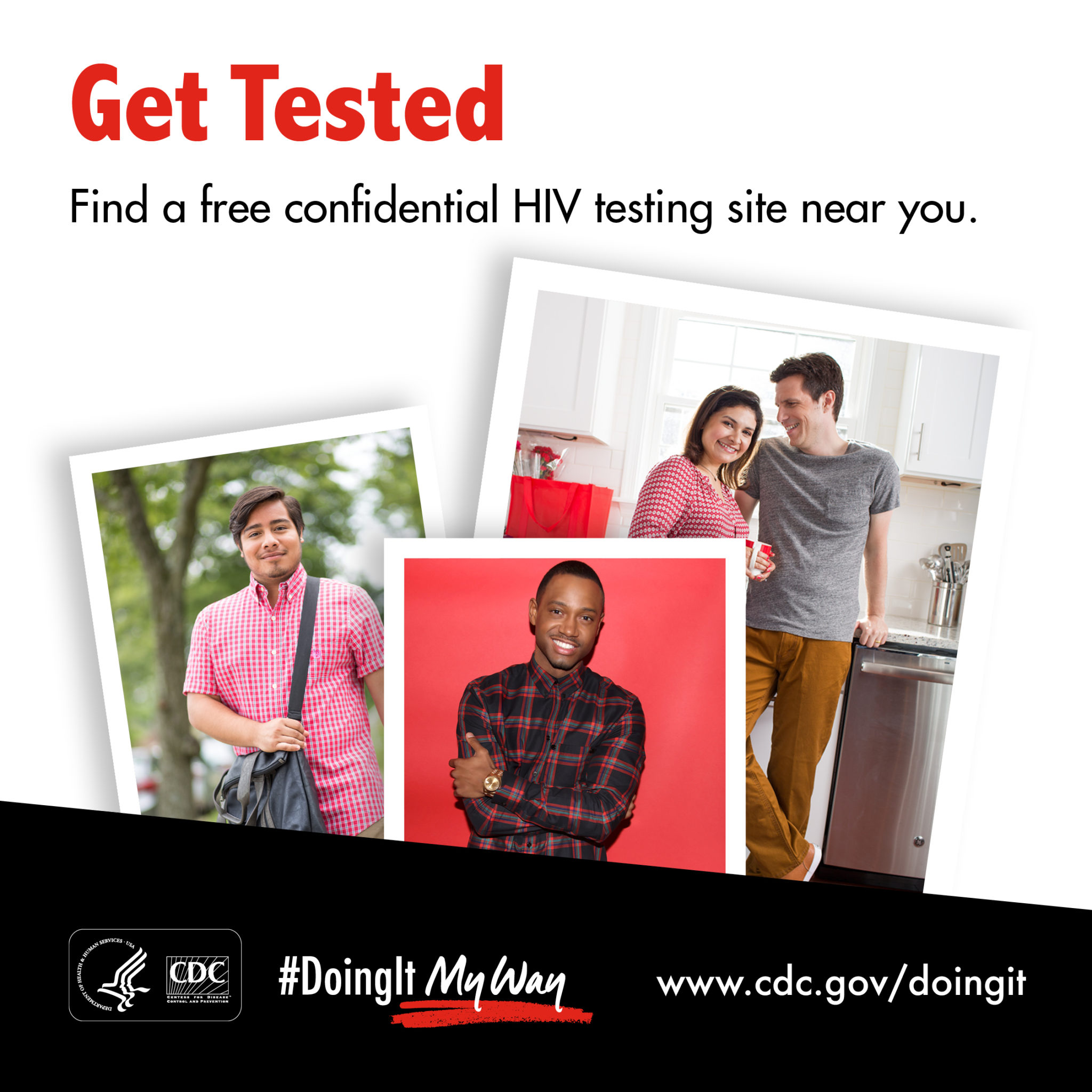HIV and AIDS
HIV and AIDS
Approximately 1.1 million people in the United States are living with HIV today. But not all of them know it. In fact, about 15 percent (or 1 in 7) of them are not aware they are living with HIV. That means there are approximately 165,000 people in the U.S. who do not know that they are living with HIV. They are not getting the care and treatment that can preserve their health and protect their partners from getting HIV, too.
Everyone Should Know Their HIV Status
That’s why it’s so important for everyone to know their HIV status. The only way to know for sure whether you have HIV is to get tested.
CDC recommends that everyone between the ages of 13 and 64 get tested for HIV at least once as part of routine health care. If your behavior puts you at risk after you are tested, you should think about being tested again.
Find HIV Testing Options Near You Today
There are many places to get an HIV test. The tests are easy, quick, and often free. To find locations near you where HIV tests are available, click here.
Guide for HIV and AIDS Services in North Texas
This booklet provides information about organizations in North Texas providing services for people with HIV.
What Is HIV?
HIV stands for human immunodeficiency virus. It is the virus that can lead to acquired immunodeficiency syndrome, or AIDS, if not treated. Unlike some other viruses, the human body can’t get rid of HIV completely, even with treatment. So once you get HIV, you have it for life.
HIV attacks the body’s immune system, specifically the CD4 cells (T cells), which help the immune system fight off infections. Untreated, HIV reduces the number of CD4 cells (T cells) in the body, making the person more likely to get other infections or infection-related cancers. Over time, HIV can destroy so many of these cells that the body can’t fight off infections and disease. These opportunistic infections or cancers take advantage of a very weak immune system and signal that the person has AIDS, the last stage of HIV infection.
No effective cure currently exists, but with proper medical care, HIV can be controlled. The medicine used to treat HIV is called antiretroviral therapy or ART. If taken the right way, every day, this medicine can dramatically prolong the lives of many people infected with HIV, keep them healthy, and greatly lower their chance of infecting others. Before the introduction of ART in the mid-1990s, people with HIV could progress to AIDS in just a few years. Today, someone diagnosed with HIV and treated before the disease is far advanced can live nearly as long as someone who does not have HIV.
What Is AIDS?
AIDS is the most severe phase of HIV infection. People with AIDS have such badly damaged immune systems that they get an increasing number of severe illnesses, called opportunistic infections.
To read more about the stages of HIV infections, click here.
Be Hands-On With Your Health
Check out the resources below
What Is HIV?
HIV stands for human immunodeficiency virus. It is the virus that can lead to acquired immunodeficiency syndrome, or AIDS, if not treated. Unlike some other viruses, the human body can’t get rid of HIV completely, even with treatment. So once you get HIV, you have it for life.
HIV attacks the body’s immune system, specifically the CD4 cells (T cells), which help the immune system fight off infections. Untreated, HIV reduces the number of CD4 cells (T cells) in the body, making the person more likely to get other infections or infection-related cancers. Over time, HIV can destroy so many of these cells that the body can’t fight off infections and disease. These opportunistic infections or cancers take advantage of a very weak immune system and signal that the person has AIDS, the last stage of HIV infection.
No effective cure currently exists, but with proper medical care, HIV can be controlled. The medicine used to treat HIV is called antiretroviral therapy or ART. If taken the right way, every day, this medicine can dramatically prolong the lives of many people infected with HIV, keep them healthy, and greatly lower their chance of infecting others. Before the introduction of ART in the mid-1990s, people with HIV could progress to AIDS in just a few years. Today, someone diagnosed with HIV and treated before the disease is far advanced can live nearly as long as someone who does not have HIV.
What Is AIDS?
AIDS is the most severe phase of HIV infection. People with AIDS have such badly damaged immune systems that they get an increasing number of severe illnesses called opportunistic infections.
To read more about the stages of HIV infections, click here.
Guide for HIV and AIDS Services
in North Texas
This booklet provides information about organizations in North Texas providing services for people with HIV.



